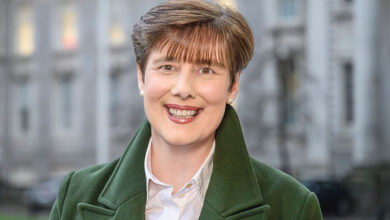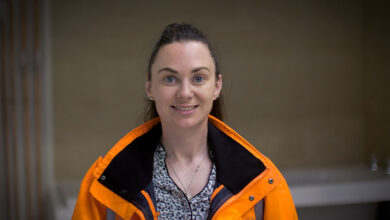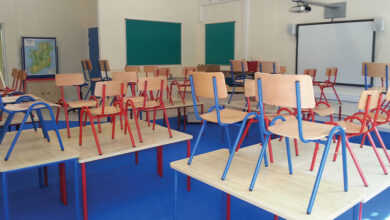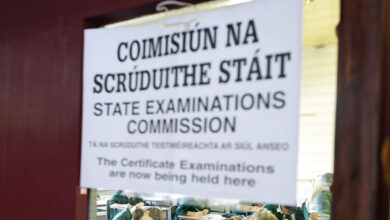DEIS programme under review with expansion possible

With Minister for Education and Skills Joe McHugh TD announcing in November that the Government was “in the middle of a review” of the DEIS — Delivering Equality of Opportunity in Schools — programme, eolas looks at how DEIS schools and students are currently faring in the larger context of Irish education.
As he discussed the status of the review, Minister McHugh announced that an audit had been undertaken and that an extension of the scheme to incorporate more schools was possible, although it was dependent on the resources available.
The Minister’s comments came just weeks after the Higher Education Authority published their Higher Education Spatial and Socio-Economic Profile for the academic year 2017/18. The profile revealed that those from better off financial backgrounds are still more likely to go to college, but that progress had been made towards “delivering on the national priority of increasing access to higher education”.
The study, which examines the student bodies of all publicly funded institutions except for Trinity College Dublin, found that:
- 19 per cent of the overall student body and 36 per cent of medicine education enrolments come from people who qualify as “affluent” while only 15 to 16 per cent of the general population are considered “affluent”;
- 15 per cent of the second-level student body qualify as “disadvantaged”, yet only 10 per cent of the third-level student body and 3.5 per cent of medicine enrolments were classed as “disadvantaged”;
- Dún Laoghaire IADT had the highest proportion of “affluent” students, 35 per cent, while University College Cork, University College Dublin and the Royal College of Surgeons, Ireland had the lowest proportion of “disadvantaged” students, 5 per cent. Letterkenny IT had the highest proportion of “disadvantaged” students, with 24 per cent;
- Most institutions reflected the socio-economic profiles of their locations;
- Medicine, business, finance and engineering degrees and courses all had high proportions of “affluent” students, while agriculture, environmental, social work and childcare degrees and courses all had high proportions of “disadvantaged” students; and
- The socio-economic profile of Institute of Technology, Blanchardstown — now part of Technological University Dublin — had most closely mirrored the socio-economic profile of the nation.
The latest of the Irish Times’ annual feeder schools tables, which show the proportion of students progressing on to third-level institutions, show that 57 per cent of students from DEIS schools progress onto third-level education, a figure that has remained the same since 2013. However, there have been individual DEIS schools who have shown improvement in that time, such as Adamstown Vocational Colleges in Enniscorthy, County Wexford, which has seen an almost 50 per cent rise in those progressing to third-level in those six years.
Fee-paying schools, which are subsidised by the State to the tune of €90 million every year, sent 100 per cent of their students to higher education on average. The DEIS programme, which covers 185 secondary schools, receives roughly €60 million per year in order to fund additional teachers, schoolbooks, school meals and other necessary supports.
“A recent study found that two thirds of DEIS students desired to go to college but lacked the confidence in their ability to do so. The study also found that social barriers, including a fear of not being able to fit in with collegiate peers, stood in the way of progression for DEIS students.”
There was also found to be a huge disparity in third-level progression rates based on area, with more affluent areas showing much higher proportions of progress than more deprived areas. Dublin 2, 4 and 6 all achieved third-level progression rates between 90 and 100 per cent, while only 15 per cent of students in Dublin 17 progressed on to third-level education. In terms of “higher points courses”, defined as courses in universities, colleges of education, Royal College of Surgeons Ireland or Technological University Dublin, 88 per cent of students of Dublin 6 students progressed to these institutions, with just 15 per cent of Dublin 17 students doing so.
Rates of attendance at third-level institutions from students in counties without an institution have also dropped, most likely as a result of rising accommodation costs for students in the cities that typically play home to these institutions. For example, attendance rates in Cavan and Longford dropped to 69 and 66 per cent respectively, while nearby Galway, home to National University of Ireland, Galway and Galway-Mayo Institute of Technology, boasted a rate of 82 per cent.
It must also be noted that these feeder school tables do not include data or figures for students who have progressed to apprenticeships or further education institutions, most likely to the detriment of the figures of DEIS schools more than any other schools. This is because the relevant education authorities have not released the relevant data and figures.
A recent study published in August 2019 by the academics Margaret Scanlon, Hilary Jenkinson, Pat Leahy, Fred Powell and Olive Byrne found that two thirds of DEIS students desired to go to college but lacked the confidence in their ability to do so. The study also found that social barriers, including a fear of not being able to fit in with collegiate peers, stood in the way of progression for DEIS students.
“‘How are we going to do it?’ An exploration of the barriers to access to higher education amongst young people from disadvantaged communities” interviewed 70 DEIS school students from across Dublin, Kerry and Cork, along with 25 parents, the majority of whom it was found had left school by the age of 16. 66 per cent of the students had answered that they hoped to progress to third-level education, but the study found that “lack of confidence at the prospect of progressing to higher education” and “concerns about territorial stigmatisation” and a “sense of not being ‘good enough’” all tied in with a wariness of the financial cost of attending such educations and a sense of guilt for placing their families under financial burden had led these students to believe a future of third-level study was not possible.
55 per cent of the students agreed with the statement “I don’t know if I will be able to find enough money to pay for fees and living expenses” and while the young people were said to be excited and intrigued by the prospect of college life, “this was countered by a lack of confidence in their own ability to access and participate fully in higher education”.
However, with the feeder tables coming with value added analysis for the first time this year that shows the dominance of fee-paying schools disappearing from that angle and the possibility of more extensive DEIS funding aimed at countering the social divide, perhaps a future in third-level institutions will begin to appear more believable and achievable for these students and those who come after them.





